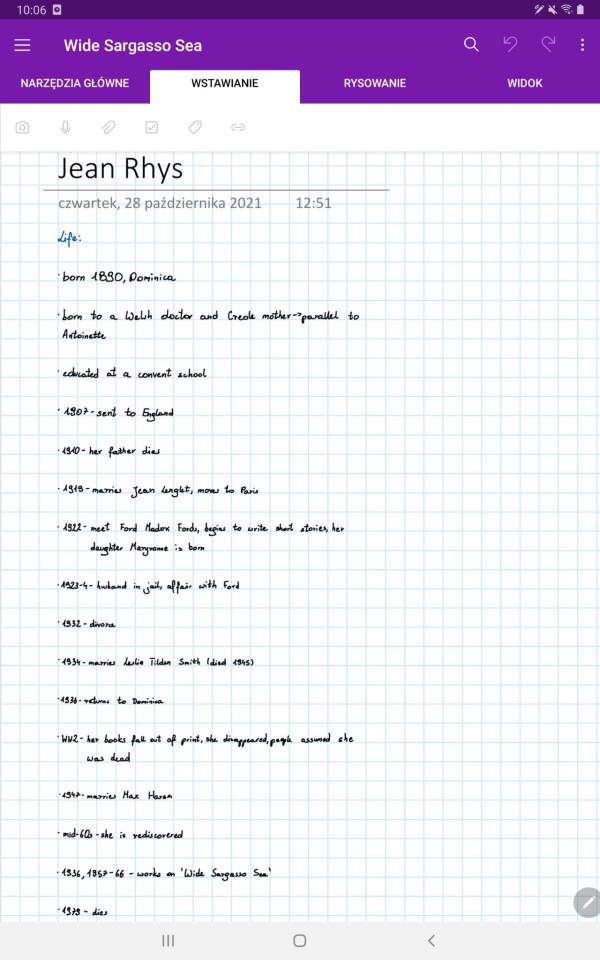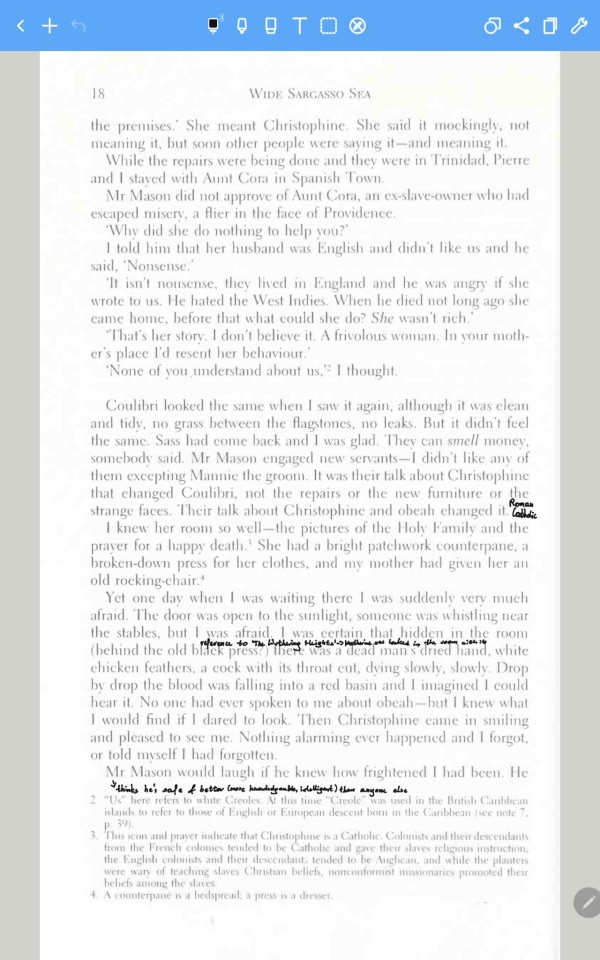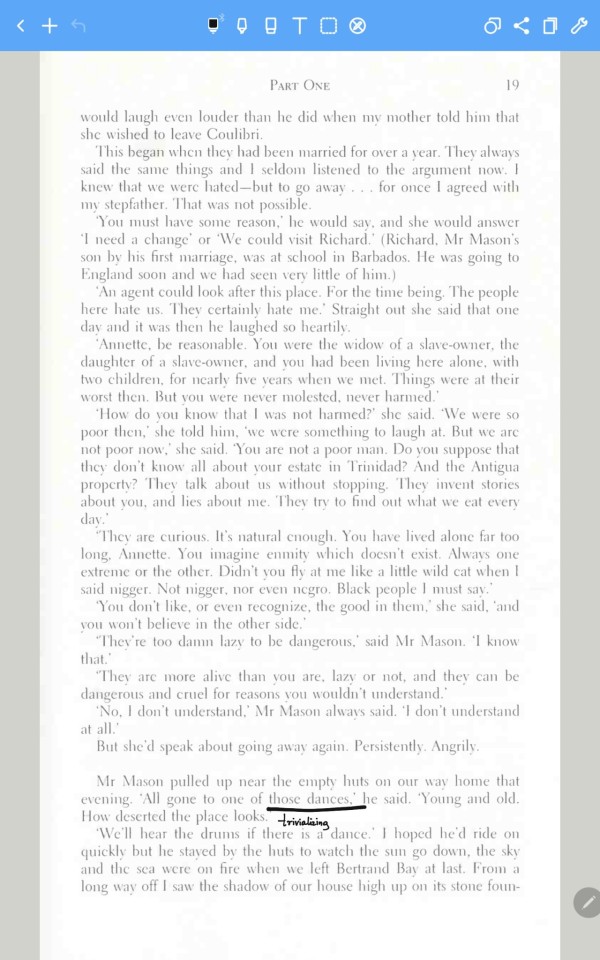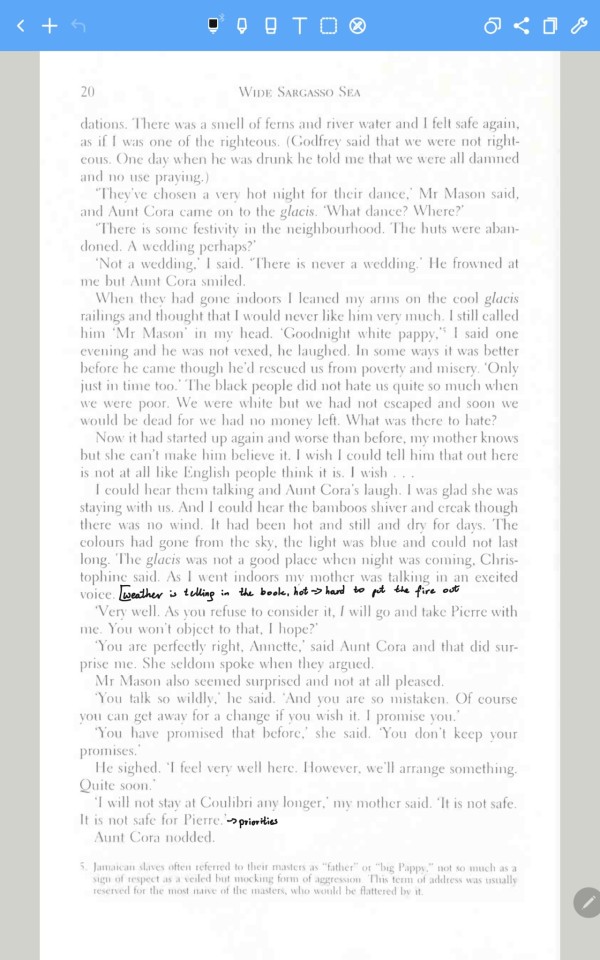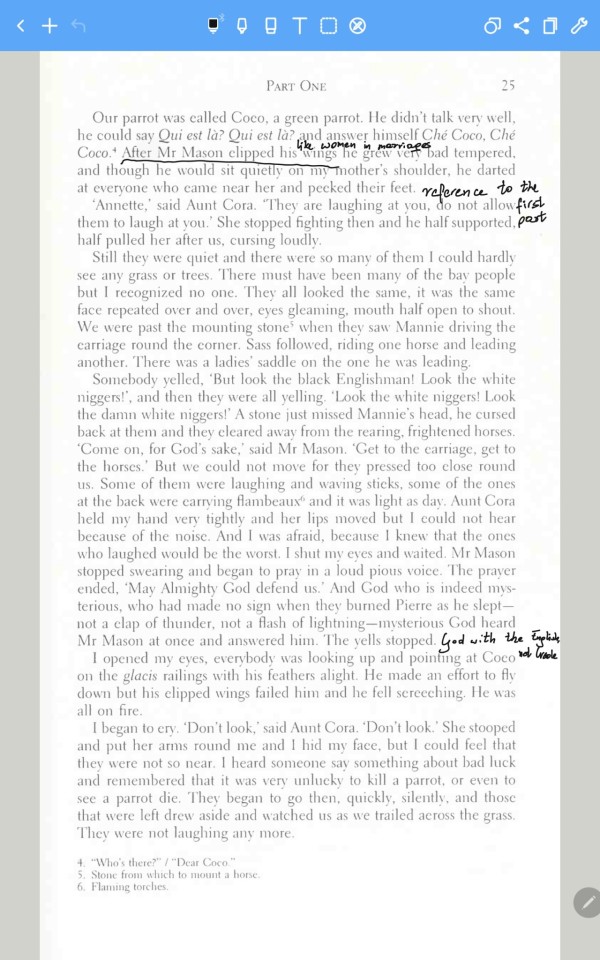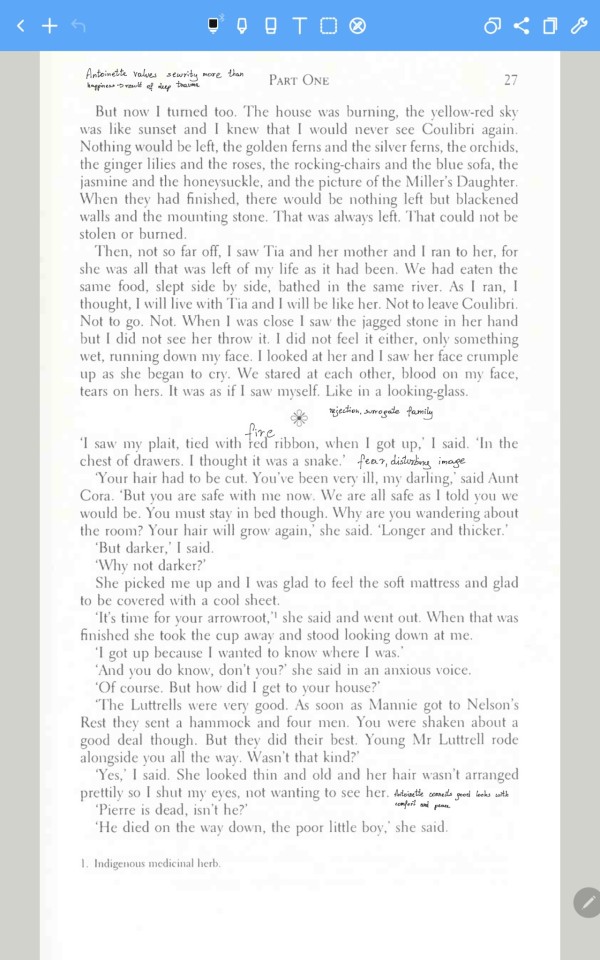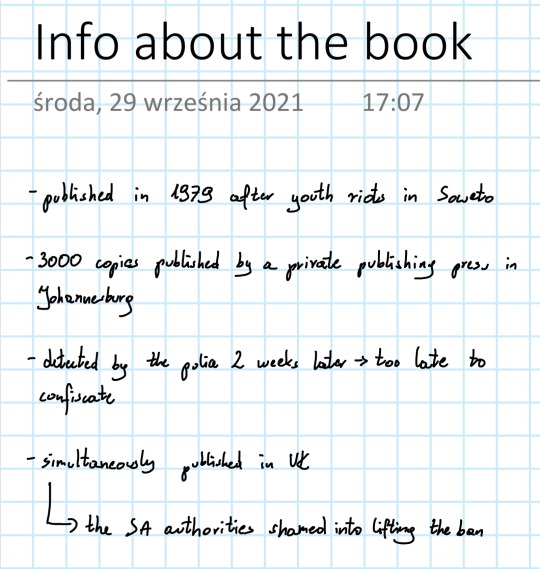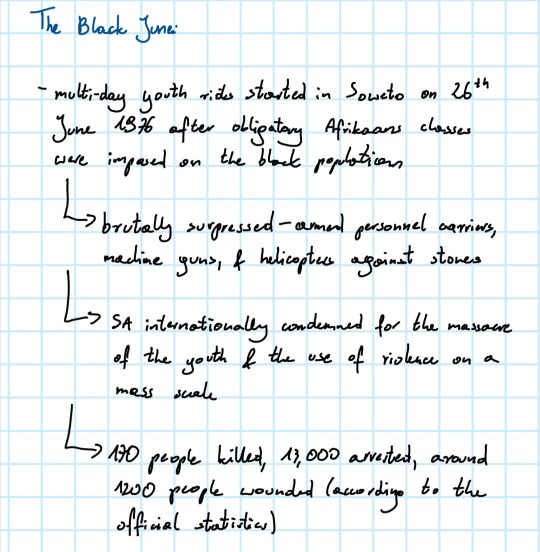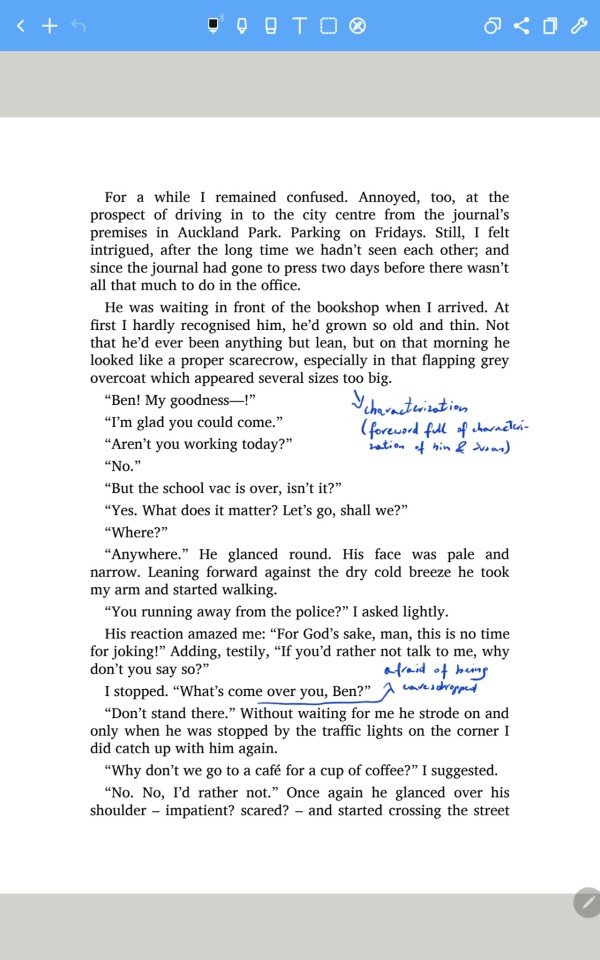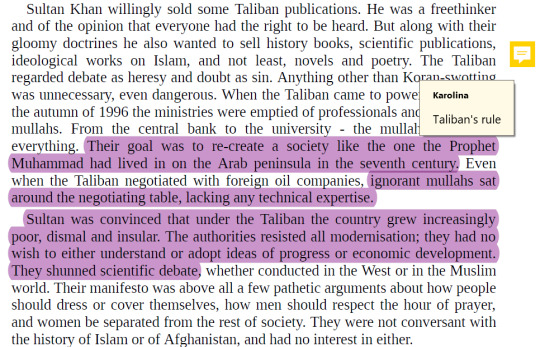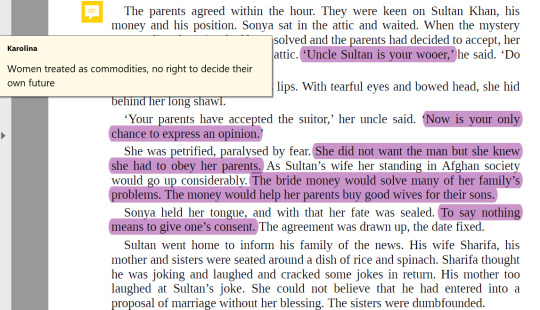Text
Exclusion of women from the society
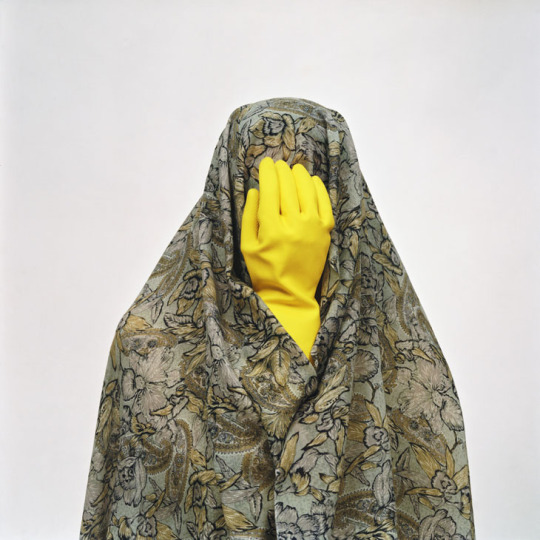
The above picture is an untitled photograph taken by an artist Shadi Gadirian. It is a part of the ‘Like Everyday Series’ from 2003, where the sculptures shaped after women have everyday tools positioned in the place of their faces. The series comments on the traditional female roles in an Islamic society and are inspired by the woman’s own experience as an Iranian. Ghadirian decided to create this series because of all the cooking utensils she got as her wedding gifts.
The subject matter presents a shape of a woman with a latex glove in the place where her face is supposed to be. The direct approach and salience achieved through the monotone background make the assemblage a central focus. The glove is of the type used while cleaning with strong chemicals, so it clearly alludes to women’s traditional duty to clean. Additionally, it is a modern object juxtaposed with an old-fashioned clothing, what reveals the artist’s anachronistic tendencies.
However, the positioning of the glove as well as its size makes it look as if it does not belong to the woman herself. It is too big to be female. Moreover, unlike in the rest of the photographs, in this case the hand does not try to replace the face but rather cover it. This forceful suppression might suggest aggression but also the erosion of women from the society. Men have attempted to reject women from the society in many ways, usually through the use of violence, physical as well as economic and psychological. Thus, the photograph might also comment on the premeditated exclusion of women from the society. Combined with the function of the glove, the author may be suggesting that detaining women inside their homes by forcing them to maintain their houses is also a way to remove them from the social and political life.
In conclusion, the photograph of a sculptural figure with a glove positioned in the place of her face alludes to multiple problems at once. The most obvious one that is integral with the rest of the series is the traditional women’s’ role to clean and maintain the house. However, it might also touch upon the topic of violence against women as well as their exclusion from the society by men.
1 note
·
View note
Text
Issue: economic dependence

The issue visible in this fragment is economic dependence. All of Antoinette's money was transferred to her husband after their marriage. Now, she is unable to leave the place she hates because she has no financial means to do it. She is dependent on her husband who only cares about himself and his reputation. Because of that, she cannot make her own decisions and must depend on her husband.
In the contemporary world, economic dependence is also an issue. It usually affects married women who do not work or earn significantly less than their husbands. ts nature differs depending on the place - in some countries, there are laws regulating this but in some it is just social norms. Economic dependence is an issue because, as shown in the text, it limits people's abilities to control their own lives.
1 note
·
View note
Text
MOCK IO - Outline & Fragments
1. Commodification - treatment as men’s property -> control and decisions, ‘Othello’ Venice and Cyprus 1571, written 1603, ‘Bookseller’ - Norwegian Asne Seierstad -> Afghanistan after 9.11
2. ‘Othello’: Desdemona as property, theft, criminal offense – semantic field of crime ‘stolen’, ‘taken away’, ‘bloody book of law’, passiveness, girl as an object, no active voice, ‘sans witchcraft’, abnormality -> triplings [17 and 20]
3. Sense of ownership -> agitation, emotionally charged words (grief, sorrow, overbearing), exclamations [12], flood, imagery -> distress, hyperbole [6], [39] -> interruption, stage directions, overshadowing of judgement and etiquette, Duke of Venice
4. Later in the play: transfer of ownership rights -> man’s property, ‘divided duty’, loyal and subservient behaviour (being hit, killed), only once acting against her father’s will -> disowned and blamed for his death
5. Other women: Emily -> treated terribly (whore), used in schemes, Bianca –> the only ‘free’ woman -> social rejection and contempt, thwarted female independence from the beginning, women sacrificing everything for control of their lives
6. ‘Bookseller’: marriage arrangements, business transaction, parents’ thoughts -> free indirect speech (tone, emotional detachment), objectification – business vocabulary (chip, bid, stakes), financial transaction, Sonya as a product, repetition (young, beautiful) – value (external)
7. Subject of conversation – does not speak, final line -> non-specific noun (Sonya like other girls) no free will -> rhetorical question [26] – ironic (no answer), commodification -> disregard for well-being -> a bit young, old, stranger, Sonya’s value -> money, she as a person – irrelevant
8. Rest of the book: Sonya as reflection, standard format of discussion, other marriage arrangement scenes, commodification rooted in culture, visible in every aspect of life, born into service, never-ending cycle of servitude, no means to oppose or escape
9. Other women: suffering under men’s reign, Sharifa -> Pakistan, separated from family, preparing for her husband’s return, Leila – servant, ‘Cinderella with no prince’, no woman in control of her life
10. Conclusion: commodification – different parts of the world, present for a long time, still a problem, many forms, making decisions, sellable goods, ‘Othello’ – subtle, objectification common and normalized, ‘Bookseller’ – shown on purpose, authorial choices point out
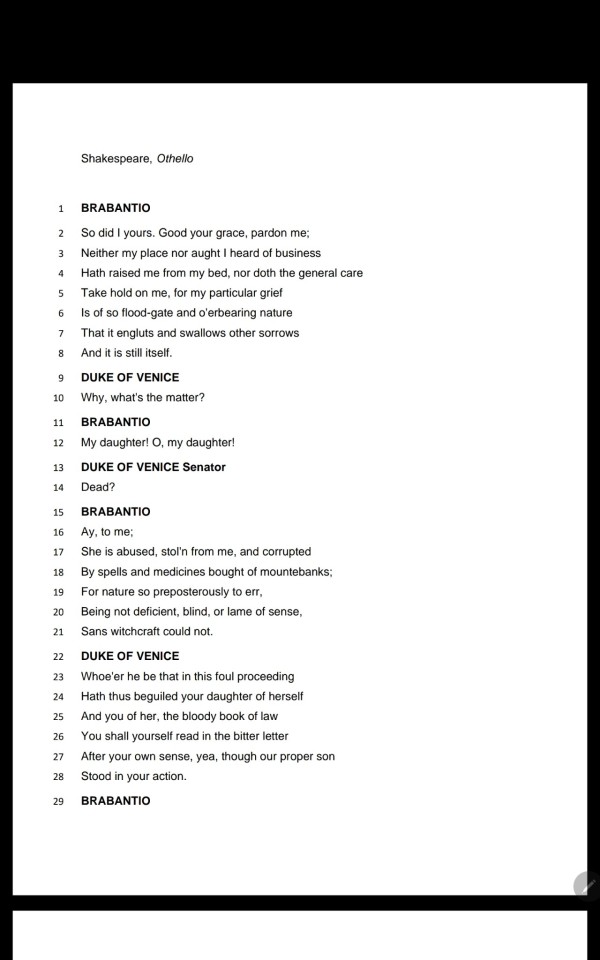
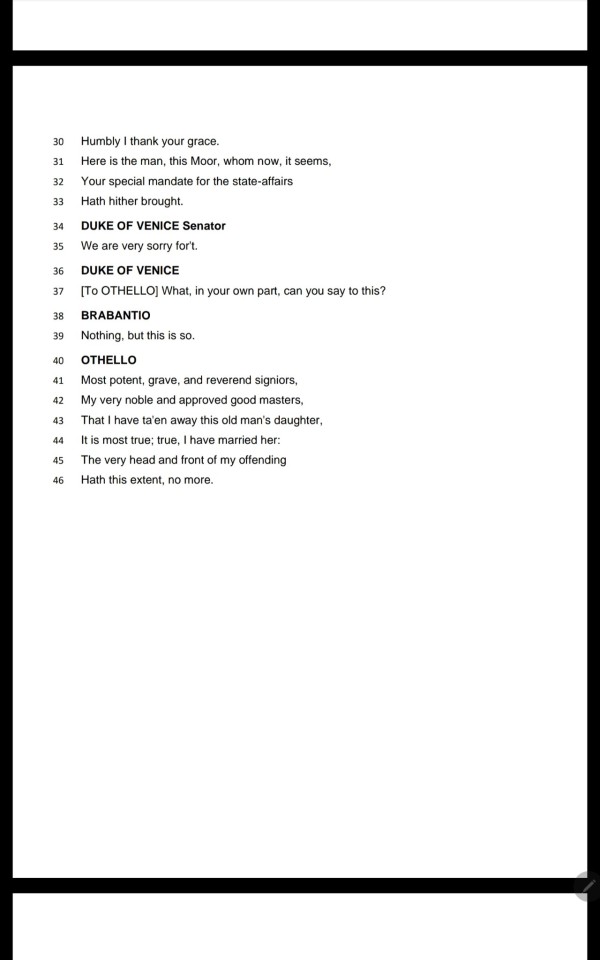

1 note
·
View note
Text
Frida Kahlo
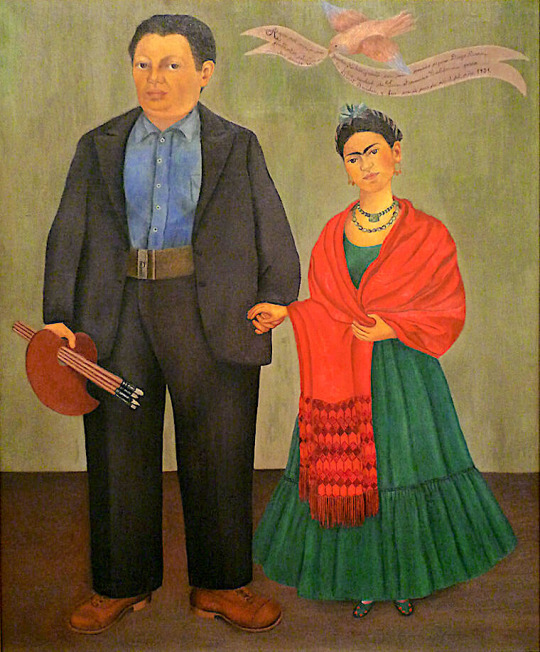
‘Frida and Diego Rivera’ - power imbalance in relationships
Power imbalance in relationships occurs when one side uses their leverage to control or influence the other side. This leverage can take many forms, including: economic assets, affection, or emotional manipulation.
This imbalance is clearly visible in the painting above. The most obvious sign of it is the unnatural difference in size of the two characters (especially their feet) - Diego is much bigger, whereas Frida is much smaller. Still, other aspects of the painting also reveal unequal power dynamics although in a more subtle way. For example, Frida, unlike her husband, wears traditional Mexican clothes because of Diego’s preferences. Moreover, while Frida is leaning towards the man, he is slightly turned away from her. This might signify his detachment from his wife and his future romances. These two things, apart from the age gap, are the main factors causing the imbalance in their relationship - Frida, trying to uphold their marriage, would ignore many of Diego’s wrongdoings. Additionally, Diego is painted with a palette to show that he is an artist, whereas Frida, who painted this work, is not. This reveals Frida’s insecurity about her place in the world of art as well as her economic dependence on Diego, the artist that can actually afford to live off his art.
Kahlo’s situation, although separated by almost a century, resembles the situation of many women today. They are also taught that it is their responsibility to uphold and care for their marriage what is often used by men to manipulate their wives.
2 notes
·
View notes
Text

This fragment shows the dangers of abuse of power and intimidation. The girl mentioned in the text was arrested without a reason, locked in a cell and tortured, and then, after 6 months, released with no charges. It was clearly an attempt made by the police to intimidate her and frighten into submission since they had no grounds for arrest and they simply exploited their right to keep people in custody even when their blame wasn’t proven.
This scene caught my attention because, even if on a much smaller scale and using much less drastic measures, this is what the Polish government is doing by arresting their political opponents and protesters for no reason. This proves that abuses of power can happen in any time and any place in the world, no matter the culture or economic level of the country.
1 note
·
View note
Text
Ads
Typical parts of an ad:
· Image;
· Slogan;
· Copy (text of the ad);
· Logo;
Logo – a design used by organizations to identify their products;
Slogan – a short, catchy phrase used in advertising;
Slogo – a slogan that is as recognizable as a logo (e.g. Just do it);
Visual techniques:
· Composition – everything included and omitted in an image;
· Rule of thirds – a technique of dividing an image into thirds and putting subject of focus on the intersections;
· Negative space – space around a subject;
· Salience – the dominant part of the image;
· Juxtaposition – contrasting two different objects;
Advertising techniques:
· Problem and benefit – presenting a problem people may even not notice and the solution (the advertised product) to it;
· Bandwagon effect – making an impression that other people do this thing/use this product etc. and thus pressuring other people into acting the same;
· Testimonials – recommendations from ordinary people;
· Celebrities – using celebrities in ads as people who other look up to;
· Association – connecting products with certain values;
2 notes
·
View notes
Text
IO outline
Global Issue: Victim blaming
An excerpt from ‘Victim blaming: Is it a woman’s responsibility to stay safe?’ BBC article
"No-one will talk about the most common denominator here," she said.
"Headphones don't rape women, nor do skirts, or dark streets, or clubs, or alcohol, or parties, or sleepovers, or school uniforms.
"Name the perpetrators. Name the problem. We can't help if we can't even name it."
She added there was a hypocrisy to the police's sexual assault message and that given out following other types of crime.
"When there is a terrorist attack, government, police and public figures say 'we will not change our way of life, we will not change our behaviours... we will carry on as normal because we deserve a safe society'.
"But when women are being raped and assaulted, government, police and public figures say 'women, change your behaviours... do something different'. Why are women supposed to change their lives and their behaviours for sex offenders?"
Her sentiments were mirrored online in response to the BBC's story.


"While I'm sure the advice is well intended, it's very problematic," she added.
"The narrative puts the victim at fault, rather than the criminal. We so frequently hear reports of attacks which detail the behaviour of the victim: what they were wearing, where they were, what time of day, if they were alone, if they had consumed alcohol.
"All of these things suggest that those choices were naive, foolish, dangerous, or incorrect in some way."
‘The Handmaid’s Tale’ by Margaret Atwood
It's Janine, telling about how she was gang-raped at fourteen and had an abortion. She told the same story last week. She seemed almost proud of it, while she was telling. It may not even be true. At Testifying, it's safer to make things up than to say you have nothing to reveal. But since it's Janine,it's probably more or less true.
But whose fault was it? Aunt Helena says, holding up one plump finger.
Her fault, her fault, her fault, we chant in unison.
Who led them on? Aunt Helena beams, pleased with us.
She did. She did. She did.
Why did God allow such a terrible thing to happen?
Teach her a lesson. Teach her a lesson. Teach her a lesson.
Last week, Janine burst into tears. Aunt Helena made her kneel at the front of the classroom, hands behind her back, where we could all see her, her red face and dripping nose. Her hair dull blond, her eyelashes so light they seemed not there, the lost eyelashes of someone who's been in a fire. Burned eyes. She looked disgusting: weak, squirmy, blotchy, pink, like a newborn mouse. None of us wanted to look like that, ever. For a moment, even though we knew what was being done to her, we despised her.
Crybaby. Crybaby. Crybaby.
We meant it, which is the bad part.
I used to think well of myself. I didn't then.
That was last week. This week Janine doesn't wait for us to jeer at her. It was my fault, she says. It was my own fault. I led them on. I deserved the pain.
Very good, Janine, says Aunt Lydia. You are an example.
1. First extract - a BBC article Victim blaming: Is it a woman’s responsibility to stay safe? and an extract from The Handmaid’s Tale by Margaret Atwood
2. Victim blaming -> puts the full responsibility of preventing a given situations on the victim and at the same time clears the person truly responsible of it of the blame
Article:
3. Jessica Eaton, an activist speaking up for the victims of sexual violence, forensic psychology graduate focusing on the psychological motivation of victim-blaming
4. ‘Headphones don’t rape women’, ‘we can’t help if we can’t even name it’ – facing the problem, victim-blaming as a way to divert attention
5. Lines 7-12 – women as second-class citizens, supposed to adjust so that others are comfortable
6. Tweets and rest of the text -> focus on the victim clears men of the blame, is used to show that the victim’s actions led to the SA
Book:
7. ‘gang-raped at fourteen’ – emphasis on the vulnerability and innocence -> young & alone
8. ‘Whose fault, ‘who led them on’ , ‘teach her a lesson’ -> victim-blaming, she deserved it bcs she couldn’t avoid it, her inability makes her responsible
9. ‘You are an example’ –example of what happened before the Gilead and what could happen if women stepped out of the line -> victim-blaming as the basis of women’s oppression in Gilead;
Conclusion:
10. Victim-blaming -> means of control, protecting men, and avoiding the problem
1 note
·
View note
Text
‘The Handmaid’s Tale’ - how context changes perception
Learning more about the historical and social context of the novel definitely changed my perception of it. Before, the whole story seemed very abstract and exaggerated to me. Now, I realize that, altough the Gilead drastically differs from the world around me, it is, in fact, based on it.
Reading the book, I, as the unconcerned party, was rather detached. I was deeply engaged in the story and I greatly sympathised with the main character, however, I dd not find the whole concept of the book very much realistic. Now, I realize that the attitudes and convictions presented in the book are very much present in contemporary world, the world around me.
Now, I feel that I understand the book more, as well as the author’s need to write it. It is better anchored in my reality and better resonates with me.
1 note
·
View note
Text
‘The Lost Art of Oratory’ movie - notes
Rhetoric devices often used by Obama and their functions:
· Ascending tripling – pleasing to the ear, catches attention;
· Anaphora – creates rhythm, catches attention;
· Captatio benevolentiae – appeal to the goodwill of audience, gets on a good side of the listeners;
· Praeteritio – draws attention to a topic the speaker pretends not to discuss;
Additional things:
· Americans often like plain language, however, oratory is expected at inauguration speeches to make them memorable;
· The Lincoln Memorial is a temple to oratory. Lincoln is memorable because he’s brief – single sentences are important because no one remembers a 2-hour speech;
· Barack Obama’s speeches were influenced by him being a part of African-American church. That’s why they often resemble a preaching;
· Just as important as the content of the speech is how it is presented – body language, eye contact, tone – people won’t remember even 10% of what exactly you said;
· Parliamentary debates -> ripostes more important than arguments;
· Mass media have changed oratory – appearance and gestures became more important, no thing could be taken back.
1 note
·
View note
Text
Harvey Milk
Basic information:
· Harvey Bernard Milk
· Born May 22, 1930;
· Middle-class, Jewish;
· Second son;
· Grew up in Woodmere, Long Island;
· Joined the navy after college;
· Was a stock-broker on Wall Street;
· In 1960s befriended avangard people, then became a producer on Broadway;
· Took part in many protests (anti-war, defending human’s rights);
· Knew he was gay since he was 14;
· Opened a camera store on Castro Street in San Francisco;
· Kind, helpful, funny;
· A great speaker;
· Always stood up for what he believed;
· Fought for rights of all minorities;
Important dates and campaigns in his political career:
· Moved to San Francisco in 1960s; - there he took part in neighbourhood’s politics;
· 1973 – running for the board of supervisor San Francisco city council – many people treated him as a joke (he was openly gay by then) – lost three times;
· 1975 – George Mosconi becomes San Francisco mayor – supports homosexuals, including Milk – changed the form of electing candidates for supervisors – candidates ran from districts, not town;
· 1974 - Castro Street Fair – a street with a lot of gay businesses;
· In 1977 he run for a supervisor again – had two other serious rivals, other one was also gay – walked door-to-door to gain support – won (it was his 4th attempt) – firs gay supervisor in San Francisco history;
· Dan White – opposed Milk in everything he did;
· Gay Rights Bill of San Francisco – signed in 1978, strongly advocated by Milk;
· 1978 – Briggs Initiative – Milk fought hard against it;
· November 27, 1978 – Milk and Moscone were shot by Dan White on the day his replacement were supposed to be announced;
Milk’s stress on the coming out of gay people:
· Power in numbers;
· If there are more openly gay people, more people know and are friends or family of homosexuals – they realize they are normal people who deserve the same rights;
· Breaking a taboo;

2 notes
·
View notes
Photo

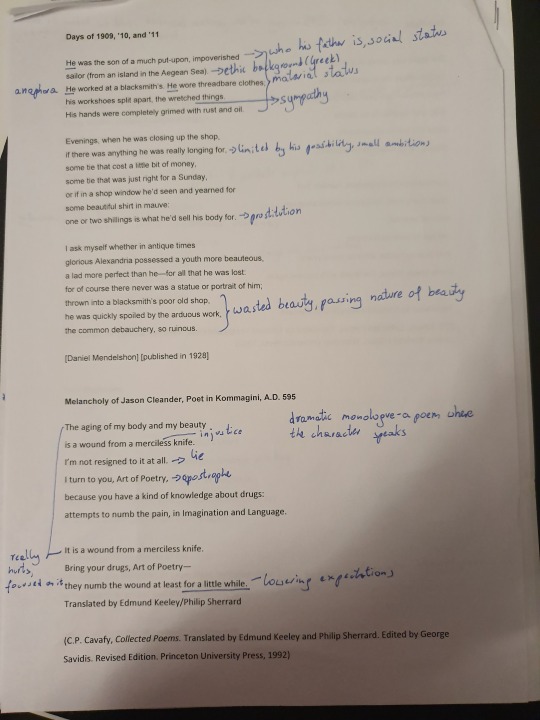
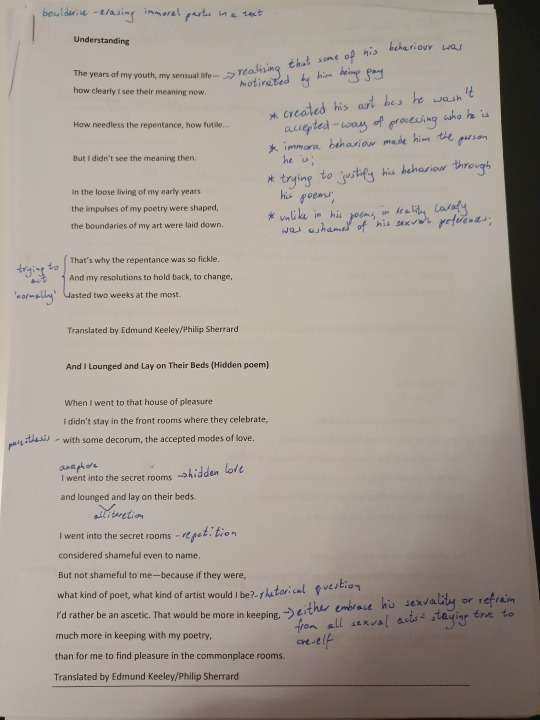

Constantine Cavafy:
· Born in 1863 in Alexandria, Egypt;
· The youngest of 9 children;
· Riches to rags – sense of loss (born rich, then after his father’s death, when Cavafy was 7 years old, his family lost almost everything);
· His father was a merchant;
· Dual citizenship (Greek and British);
· At the age of 18, in 1885, he returns to Alexandria;
· At the age of 29 he took a position as a clerk in the Department of Irrigation;
· He tried to put up a front of being a gentlemen (pretended his work was light and he had a lot of money -> gambling, being a broker on the side);
· Was unsatisfied with his life – blamed it on living in the city and its cosmopolitan environment (felt that he would work better in Paris, Vienna; at the same time, he felt Alexandria was too big for him and relations between people there were too impersonal);
Cavafy’s poetry:
· Hellenism (the national character or culture of Greece, especially ancient) – important theme in his poetry, helped him identify as a Greek;
· In Cavafy’s lifetime, Alexandria was one of the 4 centres of Hellenism - big Greek population in Alexandria – they had their own environment, including Greek schools, book stores, cafes etc.. They were a wealthy and educated community;
· To Cavafy, Alexandria represented the great period of Hellenism - one of the most splendid in the ancient world and the nucleus of Roman Egypt, a mix of races, religions, and nationalities;
· Cavafy’s genius lay in showing how Hellenism flourished in this ancient world and how ordinary people tried to hold on to this way of life;
· A laconic style - an objective, antipoetic, prosaic and antilyrical manner;
· Cavafy admired Beaudelaire, who was close to Parnassians and an inspiration to Symbolists;
· Interested in the past and past dramas (how we are similar to them);
· Wanted people to learn history (historical periods and figures) from his poems;
· Used a mixture of purist and demotic Greek;
· He used the free iambic form, and the verses mostly have 10 to 17 syllables;
· He did not use rhyme often, but when he did, it usually implied irony;
· Often addresses historical figures or abstract ideas (apostrophe);
· Cavafy often writes as another person so that his poems wouldn’t be limited by his own experiences;
· Used a mix of purist and demotic Greek;
Themes in Cavafy’s works:
· History;
· The art of living/ good life (ethically understood);
· Classical legacy;
· Alexandria;
· Age and aging (in erotic poems);
· Uncertainty about the future;
· Expression of sensual pleasures;
· Search for identity;
· The moral character and psychology of individuals;
· A fatalistic existential nostalgia;
Ø The historical poems have their origins in Hellenoromaic antiquity, the Byzantine and the Hellenistic era. The main place of the poetic action is Alexandria. Many of the historical poems could be characterized as pseudo-historical or seemingly historical.
Ø The sensual poems have lyrical and emotional character and seem to be drawn from personal experiences, memories and future expectations
Ø The philosophical poems are mostly connected with either consultations to poets or situations involving for example closure, human dignity and existential fears.
3 notes
·
View notes
